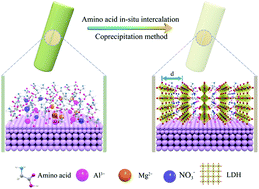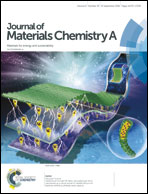Tuning molecular sieving channels of layered double hydroxides membrane with direct intercalation of amino acids†
Abstract
Two-dimensional (2D) materials have been widely used to construct efficient molecular sieving and transport channels in membrane separation. However, controlling the architecture and properties of the separation channel is still a great challenge. In this study, we propose a facile and feasible approach to prepare layered double hydroxide (LDH) composite membranes on tubular ceramic substrates by using amino acids (glycine, serine and alanine) as intercalation molecules. The interlayer spacing formed in the stacked LDH nanosheets provides transport channels for water molecules, and is modified through in situ intercalation of amino acid molecules with different molecular size and hydrophilic properties. The amino acid-intercalated LDH membranes exhibited high permeance without sacrificing rejection compared with pristine LDH membranes. Particularly, the glycine-intercalated LDH composite membrane with expanded hydrophilic transport channels shows a permeance of 566 L m−2 h−1 MPa−1 and a rejection of about 98.5% towards Eriochrome Black T (EBT) molecules. The permeance is 2.2-fold higher than that of the pristine LDH membrane. Moreover, molecular simulation was also used to interpret the intercalation and separation mechanism of the LDH membranes. We anticipate that this study may extend the materials and methods to regulate and control the transport channels in membranes.



 Please wait while we load your content...
Please wait while we load your content...